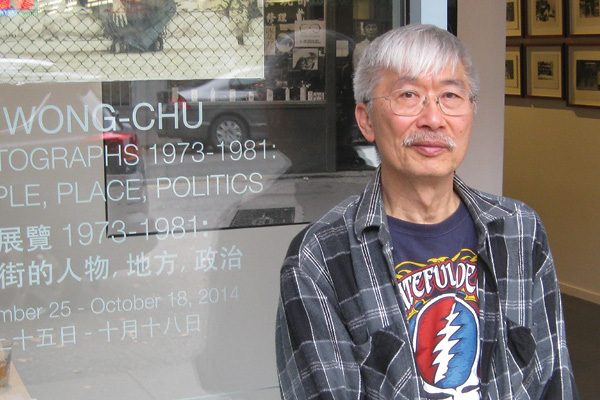By Terry Watada
Friends and family have recently noted that my columns seem to despair of the present. And who has a better right? I don’t like the changes happening in society. Geez, HMV is closing its doors in April! Every time I see a Millennial walking down the street, talking to himself, I wonder if he’s crazy. I do see the Bluetooth stuck in his ear but that doesn’t dissuade me much. I still think he’s crazy.
Tom Brokaw, perhaps the last of the great journalists, observed that no one talks to one another face-to-face. In an elevator, everyone is looking at their Smart phones. Even Bill Gates stated that he hopes we become more civil when using a cell phone.
It is no wonder I despair for modern society.
Then I saw someone who gave me hope, a bright light in the new age of unenlightenment. During the Million Woman March in Washington, the cameras focused on a lone Asian American singer who began to lead a group of women in a song so stirring it brought tears to the eyes.
Connie Lim goes by the name Milck. She is a Los Angeles vocalist, keyboardist and songwriter. She is also the victim of abuse, depression and anorexia. She felt the angst of childhood more than most.
“I was told that I was a moody child, with quite a bit of angst. I didn’t like taking photos, and I didn’t like that girls were assumed to like pink. I was drawn to gray t-shirts, blue backpacks, and rolly pollies. I was constantly told to tidy up and be more lady-like.”
Milck on-line interview
Her only escape was songwriting and singing. So she moved to explore music; she soon grew tired of the pop-driven LA music scene and created Milck – her name Lim spelled backwards plus the initials of her first and middle name. Some feel she coined the name to turn herself inside out, to examine herself. She no longer lived to please others to endure her pain.
Earlier this year (January 18th to be exact), she released the single “Quiet”. Critics said the song is a rise against Milck’s own history of physical and sexual abuse. She then decided to perform the song at the March with twenty-five other female singers. Fourteen of the singers belong to the GW Sirens of George Washington University. They created a flash mob choral performance, acapella, while wearing the instantly identifiable “pussycat” hat. They also handed out pins that have the chorus “I can’t keep quiet” emblazoned on them.
What is truly remarkable is how they rehearsed. They convened and rehearsed on-line to Milck’s arrangement – a sign of this new age. They met for the first time on the streets of Washington DC and gave a stirring performance that galvanized the March and women’s movement. Someone made a video of it and put it on Facebook and Twitter. In the end, I’d have to say this is the best use of social media I have ever confronted.
Put on your face
Know your place
Shut up and smile
Don’t spread your legs
I could do that
But no one knows me, no one ever will
If I don’t say something, if I just lie still
Would I be that monster, scare them all away
If I let them hear what I have to say
I can’t keep quiet, no oh oh oh oh oh oh
I can’t keep quiet, no oh oh oh oh oh oh
A one woman riot, oh oh oh oh oh oh oh
I can’t keep quiet
For anyone
Anymore
“Quiet” by Milck
Since the performance, choirs from all over the world have expressed a desire to perform her song. One blogger brings Milck’s activities up-to-date: “She is trying to jump-start a global movement she calls #ICantKeepQuiet. A part of her plan includes organizing an ‘I Can’t Keep Quiet’ Day, which will involve asking women to post videos of themselves singing the song and sharing their own stories.” Ah, the voice of resistance.
I don’t really care how many celebrities re-tweeted the video as others have noted. But what is important is the return of the protest song. I know it’s not the only protest song in the last ten years, but there seems to be an urgent need for one lately. Perhaps this is the start of a concerted effort to hold the powers-that-be to task. Perhaps it’s not all darkness and apathy. Perhaps it’s 1968 again.


